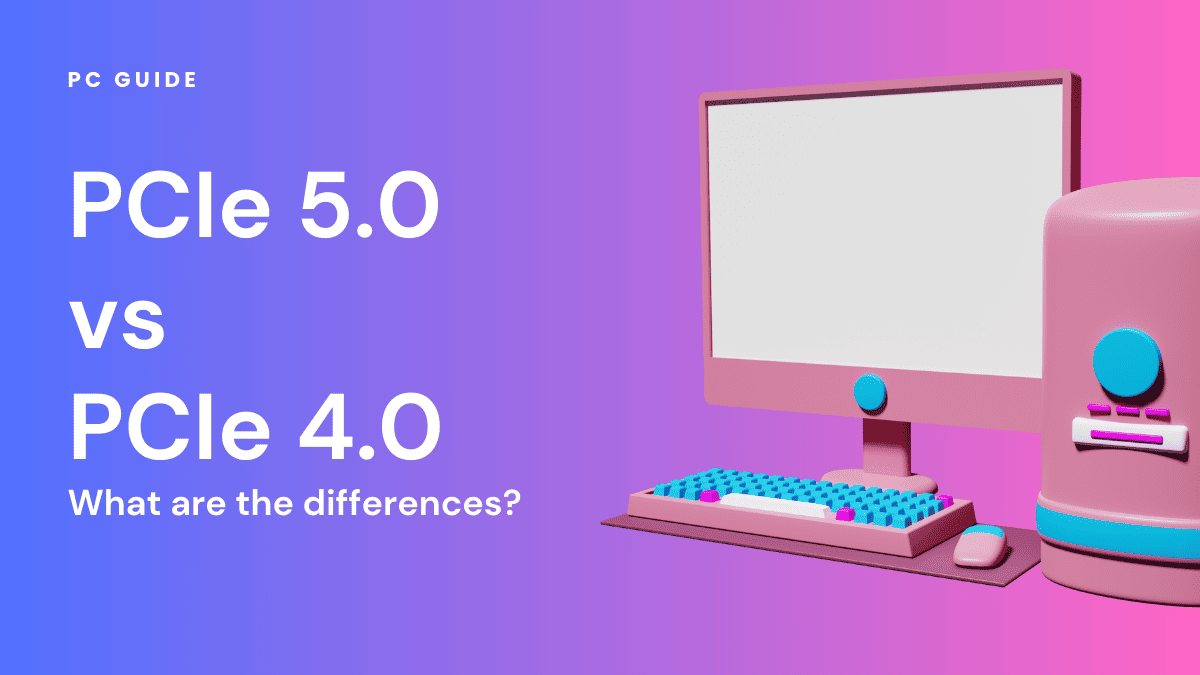PCIe 5.0 vs PCIe 4.0 – What are the differences?

Table of Contents
In the ever-evolving landscape of PC technology, the debate between PCIe 5.0 vs. PCIe 4.0 is heating up. While PCIe 4.0 has been a staple for motherboards and graphics cards since its public release, the emergence of PCIe 5.0 promises significant advancements. Intel and other major players are already hinting at the potential of this upgrade, especially when it comes to CPUs, SSDs, and GPUs.
But with both versions offering impressive bandwidth of PCIe and gigatransfers, how do they truly stack up against each other? This article aims to dissect the differences and help you understand which might be the right fit for your needs.
Prime Day may have closed its doors, but that hasn't stopped great deals from landing on the web's biggest online retailer. Here are all the best last chance savings from this year's Prime event.
- Sapphire Pulse AMD Radeon™ RX 9070 XT Was $779 Now $719
- AMD Ryzen 7 7800X3D Processor Was $449 Now $341
- Skytech King 95 Ryzen 7 9800X3D gaming PC Was $2,899 Now $2,599
- LG 77-Inch Class OLED C5 TV Was $3,696 Now $2,996
- AOC Laptop Computer 16GB RAM 512GB SSD Was $360.99 Now $306.84
- Lexar 2TB NM1090 w/HeatSink SSD Was $281.97 Now $214.98
- Apple Watch Series 10 GPS+ Smartwatch Was $499.99 Now $379.99
- AMD Ryzen 9 5950X processor Was $3199.99 Now $279.99
- Garmin vívoactive 5 Smartwatch Was $299.99 Now $190
*Prices and savings subject to change. Click through to get the current prices.
Delving into PCIe 4.0
PCIe 4.0, also known as PCIe Gen 4, marked a significant milestone in the evolution of the Peripheral Component Interconnect Express (PCIe) interface standard. Officially unveiled in 2017, this 4th generation interface quickly became the go-to choice for high-speed computer peripherals, especially in the realm of storage devices and drives.
Speed and Compatibility
Upon its release, PCIe 4.0 was celebrated for being twice as fast as its predecessor, PCIe 3.0. This speed enhancement was a boon for NVMe SSDs, which could now operate at their full potential, ensuring faster data access and improved overall system performance.
Hardware Support
The 12th-gen chipsets from major manufacturers began to support PCIe 4.0, ensuring that the latest motherboards and CPUs could harness the full power of this interface. Graphics giants like Nvidia also jumped on the bandwagon, optimizing their GPUs to leverage the enhanced bandwidth of PCIe 4.0.
Expanding the Ecosystem
Beyond just storage and graphics, PCIe 4.0 found its way into other peripherals like capture cards, enhancing the capabilities of content creators and streamers. Its backward compatibility ensured that even those with older hardware could benefit, as PCIe 4.0 devices could seamlessly work with previous PCIe versions.
In essence, PCIe 4.0 set the stage for a new era of high-speed peripherals, ensuring that both consumers and professionals had access to the best performance possible.
Unraveling PCIe 5.0
PCIe 5.0, representing the 5th iteration of the PCI Express standard, was unveiled in 2019. This latest generation not only maintains backward compatibility, like its predecessor PCIe 4.0, but also introduces a slew of advancements that set it apart from earlier versions. Its speed and efficiency make it a standout, especially when compared to PCIe 4.0.
Speed and Throughput
One of the most notable features of PCIe 5.0 is its maximum speed. It offers a whopping throughput of 32 GT/s per lane, effectively doubling the 16 GT/s offered by PCIe 4.0. This enhancement ensures that data centers, high-performance computing environments, and other demanding applications can benefit from faster data transfer rates.
Graphics and Gaming
With the rise of powerful graphics cards like the RTX series, PCIe 5.0 provides the necessary bandwidth to ensure that these GPUs can operate at peak performance. This is especially crucial for gamers, graphic designers, and professionals who rely on high-resolution visuals and real-time rendering.
Future-Proofing and Signal Integrity
Future-proofing is a significant aspect of PCIe 5.0. As technology continues to evolve, having an interface that can handle upcoming advancements is crucial. PCIe 5.0’s design addresses potential signal loss, ensuring that data integrity is maintained even at higher speeds. This makes it a reliable choice for upcoming innovations in areas like machine learning and artificial intelligence.
Broader Applications
Beyond just personal computing, PCIe 5.0 is making significant inroads in data centers and enterprise environments. Its enhanced speed and efficiency are ideal for tasks that require rapid data processing, such as machine learning algorithms and complex simulations.
In summary, PCIe 5.0 is not just an incremental upgrade; it’s a transformative leap that promises to reshape the landscape of high-speed computing and peripheral connectivity.
Comparing PCIe 5.0 vs. PCIe 4.0
One of the most significant improvements between different generations of PCI Express is the increase in bandwidth. Each new version doubles the bandwidth of its predecessor, and PCIe 5.0 is no exception.
With PCIe 4.0, we saw a significant leap to 1.97 GB/s and 16 GT/s from its predecessor. Now, PCIe 5.0 takes it even further. With a transfer rate of 32 GT/s and a bandwidth of 3.94 GB/s, PCIe 5.0 offers double the speed of PCIe 4.0 over the same number of lanes. This increase in speed opens up a world of possibilities for high-performance applications.
Conclusion
In the showdown of PCIe 5.0 vs. PCIe 4.0, the former clearly stands out with its enhanced capabilities, offering a substantial leap in speed and bandwidth. While PCIe 4.0 has served us well, the way PCIe 5.0 transfers data and its improved data transfer rate make it a game-changer, especially for applications demanding high-speed storage, networking, and graphics.
With more processors and pcie slots gearing up to support this new specification, and the increased number of pcie lanes it offers, PCIe 5.0 is poised to shape the technological landscape of the future.


